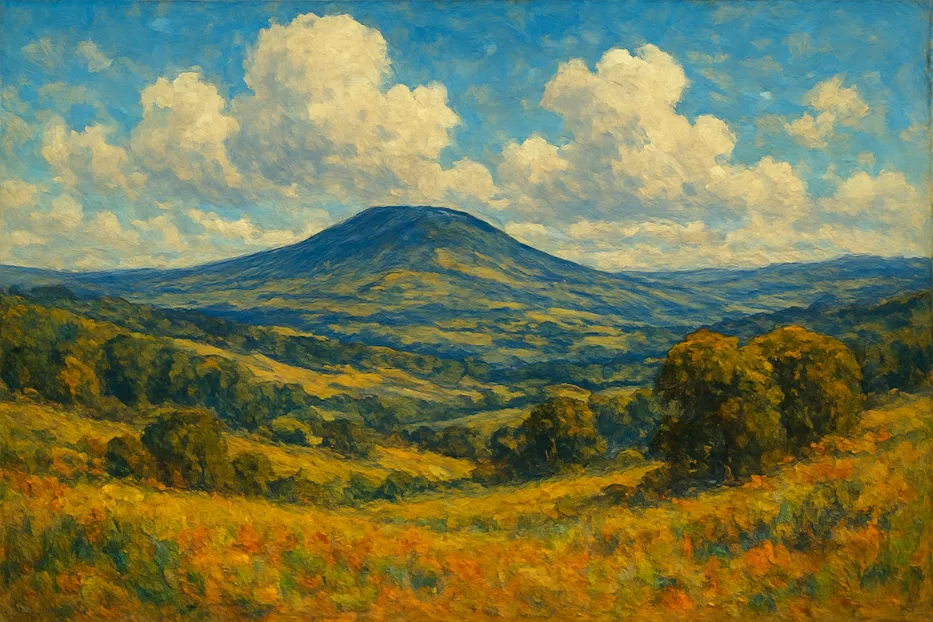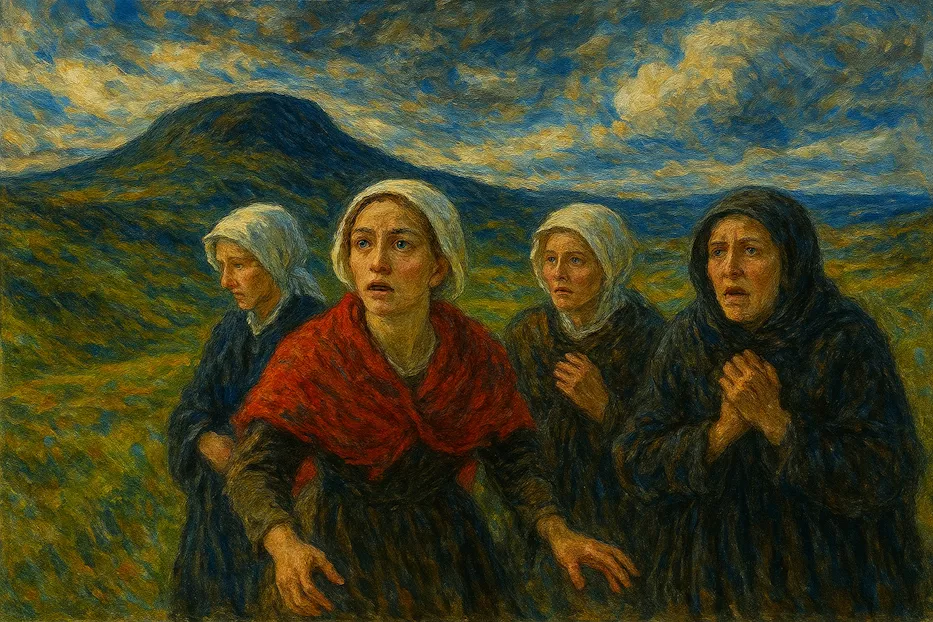For outdoor enthusiasts seeking a region that delivers unfiltered landscapes, serious adventure potential, and rare tranquility, the Forest of Bowland stands not as a backup to the UK’s headline destinations but as a destination in its own right.
Overshadowed by the Lake District to the west and the Yorkshire Dales to the east, this Area of Outstanding Natural Beauty (AONB) has long lived in the blind spot of Britain’s mainstream outdoor tourism narrative. But that anonymity is exactly what makes Bowland one of the most compelling adventure travel destinations in the UK today.
Spread across 300 square miles (803 square kilometers) of moorland, woodland, river valleys and isolated farms, the Forest of Bowland offers a rare commodity: big landscapes without big crowds.
For outdoor enthusiasts — trail-hungry hikers, gravel bikers craving solitude, birdwatchers chasing seasonal migrations, wild swimmers, dark-sky photographers, and eco-tourists seeking low-impact escapes — Bowland has become a quiet powerhouse.
This is not a region powered by glossy tourism infrastructure or marketing-driven spectacle. Bowland’s appeal lies in its authenticity: unmanufactured, often uncompromising, and defiantly rural. Its stories are shaped by working farms, centuries-old rights of way, and the elemental weather patterns of upland England.
For travellers seeking rugged wilderness experiences or luxury rural escapes built around nature rather than novelty, the Forest of Bowland delivers an uncommon sense of place.
Table of Contents
A Landscape Built for Exploration
At first glance, Bowland’s geography looks almost austere. Plateaus of heather moorland stretch toward the horizon, interrupted by deep cloughs (ravines), gritstone escarpments, and fast-moving becks. But look closer and the landscape becomes a vast outdoor playground.
The Trough of Bowland: The Region’s Signature Corridor
The Trough of Bowland, a dramatic pass carved between the central fells, is the closest thing the region has to a headline attraction. Cyclists flock to its switchback ascent from Dunsop Bridge and its long, sweeping descent toward Lancaster.
Hikers use it as a gateway to high-level ridges with commanding views of Morecambe Bay, the Fylde coast, and, on clear days, the distant spine of the Lake District.
The Trough is also a microcosm of Bowland’s character: stark and beautiful, but never theatrical; remote but never inaccessible. For many visitors, its stillness is the point.
Gritstone Fells and Wild Walks
Bowland’s uplands are not technical in the alpine sense, but they offer some of the most atmospheric walking in northern England.
Pendle Hill, sitting in the southeastern section of the Forest of Bowland, remains a magnet for hikers, history buffs, and landscape photographers. Its reputation is tied to the 17th-century Pendle witch trials, yet the hill’s greatest power lies in its geography: a solitary whale-back ridge rising above the Lancashire plains.
Further north, the Ward’s Stone and Grit Fell plateau rewards seasoned walkers with vast, elemental views and a sense of true wilderness. Navigation here demands more skill than stamina; the moorland is wild, weather-sculpted, and often pathless.
The Roeburndale valley is greener, thicker with ancient woodland and riverside trails, ideal for hikers who prefer shade over summit.
For those planning UK hiking holidays that avoid the bottlenecks of more famous national parks, Bowland’s trail network is a revelation — about 200 miles (over 300 km) of rights of way, many of them empty even during peak season.
Gravel, Tarmac and the Rise of the Bowland Cycling Scene
The Forest of Bowland has quietly become a premier destination for gravel cycling and road touring. Its combination of low-traffic lanes, steep passes, and bridleways through high moor makes it uniquely versatile. The terrain is demanding, but not prohibitive; riders can craft routes that suit endurance ambitions or weekend leisure.
The Lancashire Cycleway, Way of the Roses, and numerous bespoke gravel loops stitch together stone-built hamlets, riverside meadows, and high fells. Unlike over-commercialised cycling hotspots, Bowland’s roads rarely require choreography to avoid traffic — riders can concentrate on the rhythm of the landscape, not the next bottleneck.
Local businesses have caught on. Bike-friendly inns, farm cafés, and boutique rural accommodations now cater to cyclists seeking premium outdoor experiences without the fuss.
A Stronghold for Wildlife and a Magnet for Wildlife Photographers
Bowland is one of England’s most important strongholds for upland wildlife. Its mosaic of moor, bog, woodland, hay meadows and rivers supports diverse species, making it a prime wildlife photography destination.
The region is internationally significant for:
- Hen harriers, which continue to return each spring to nest in the heather moorland.
- Curlew, whose bubbling call is synonymous with Bowland’s open hills.
- Peregrines, merlins, short-eared owls, and a variety of raptors.
- Rare butterflies and peatland specialist flora, thriving in some of the finest blanket bog in England.
- Atlantic salmon and trout, which push upstream into Bowland’s fast, cold rivers.
Spring and early summer are peak seasons for wildlife enthusiasts, though the stark winter light creates extraordinary conditions for photographers and painters who prefer mood to colour.
Bowland’s biodiversity underpins many of its sustainable businesses: from eco-lodges designed around wildlife corridors to guided nature walks that emphasise conservation over consumption.
For eco-tourists seeking meaningful engagement rather than passive viewing, Bowland is among the UK’s most rewarding landscapes.

Dark Skies: A Rare Quality in Modern England
In an age defined by light pollution, Bowland’s skies are a revelation. The area is home to four Dark Sky Discovery Sites — at Beacon Fell Country Park, Crook O’Lune Picnic Site, Slaidburn, and the Gisburn Forest Hub — which attract astrophotographers, astronomy enthusiasts, and night-time hikers seeking some of the clearest skies in northern England.
Winter offers the best clarity, but even summer nights, given patience, can deliver the Milky Way arcing over the moorlands. For outdoor travellers seeking night photography experiences without Arctic temperatures or long-haul flights, Bowland is one of the UK’s top contenders.
Some local accommodations now market luxury dark-sky retreats, pairing high-end rural stays with astrophotography workshops or private stargazing sessions. The appeal is clear: authenticity, tranquility, and zero urban interference.
Where Outdoor Adventure Meets Rural Culture
Unlike destinations engineered around tourism, the Forest of Bowland remains fundamentally a lived-in landscape. Working farms and small villages shape the region’s rhythms. Rather than a weakness, this interplay between outdoor recreation and rural heritage is one of Bowland’s strengths.
Clitheroe, Slaidburn, Chipping, and Waddington serve as gateways for gear, food, and accommodation. Traditional pubs operate alongside farm-based eateries that spotlight high-welfare local produce: a quiet but confident form of sustainable food tourism.
For outdoor travellers who value the interplay between landscape and livelihood, Bowland offers depth that cannot be replicated in “destination-built” resort regions.
Adventure with Responsibility
Bowland is not wilderness in the North American sense; it’s a patchwork of farms, estates, and conservation areas. Outdoor enthusiasts are encouraged to adopt a respect-forward approach, avoiding disturbance to ground-nesting birds, leaving gates as they are found, and sticking to established paths during sensitive seasons.
The AONB authority and local landowners have collaborated on improved signage, expanded permissive routes, and projects that protect fragile peatlands — an essential tool in the UK’s climate-mitigation strategy.
For travellers seeking low-impact adventure travel opportunities, Bowland offers a model for how recreation and conservation can coexist without compromise.
Accommodation That Elevates the Outdoor Experience
While Bowland lacks sprawling hotel complexes, it excels at accommodations that complement the landscape. Options range from luxury converted barns and boutique farm stays to eco-pods, dark-sky cabins, and heritage inns that cater to hikers and cyclists.
The region also stands out for its rising number of sustainable rural retreats, which offer:
- Gear drying rooms
- Secure cycle storage
- On-site wildlife hides
- Outdoor hot tubs overlooking moorland
- Electric vehicle charging points
- Farm-to-table dining with hyper-local sourcing
These are not gimmicky “Instagram cabins” but thoughtfully curated spaces built for travellers who put the outdoors first.
Planning a Trip: When to Go and What to Expect
Spring brings returning birdlife, rushing rivers, and ideal temperatures for long-distance hiking.
Summer offers dry trails, extended daylight, and vibrant meadows; though wind remains a reliable companion on higher ground.
Autumn transforms Bowland into a palette of gold and russet, a prime season for trail running, gravel riding, and landscape photography.
Winter creates moody, cinematic conditions that attract photographers, stargazers, and endurance-minded hikers who value solitude above comfort.
Regardless of season, Bowland rewards preparation: weather can turn abruptly, mobile signal is patchy, and some trails require confident navigation. But for many outdoor travellers, these challenges are part of the appeal.
Why Bowland Matters Now
As outdoor recreation surges in popularity, and areas like the Lake District reach capacity during peak periods, landscapes like the Forest of Bowland are becoming essential.
They offer space for exploration without environmental overload, opportunities for adventure without urban intrusion, and a connection to rural Britain that feels both authentic and resilient.
It’s time to stop thinking of the Forest of Bowland as the quiet middle ground between famous neighbours. It’s time to recognise it as one of the UK’s most compelling landscapes for hiking, cycling, wildlife watching, dark-sky imaging, and sustainable rural travel.
In an era of noise, Bowland’s power lies in its silence.


